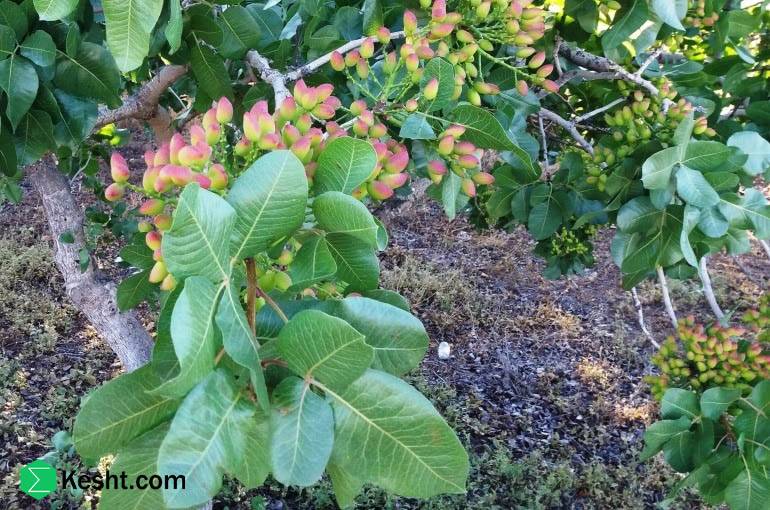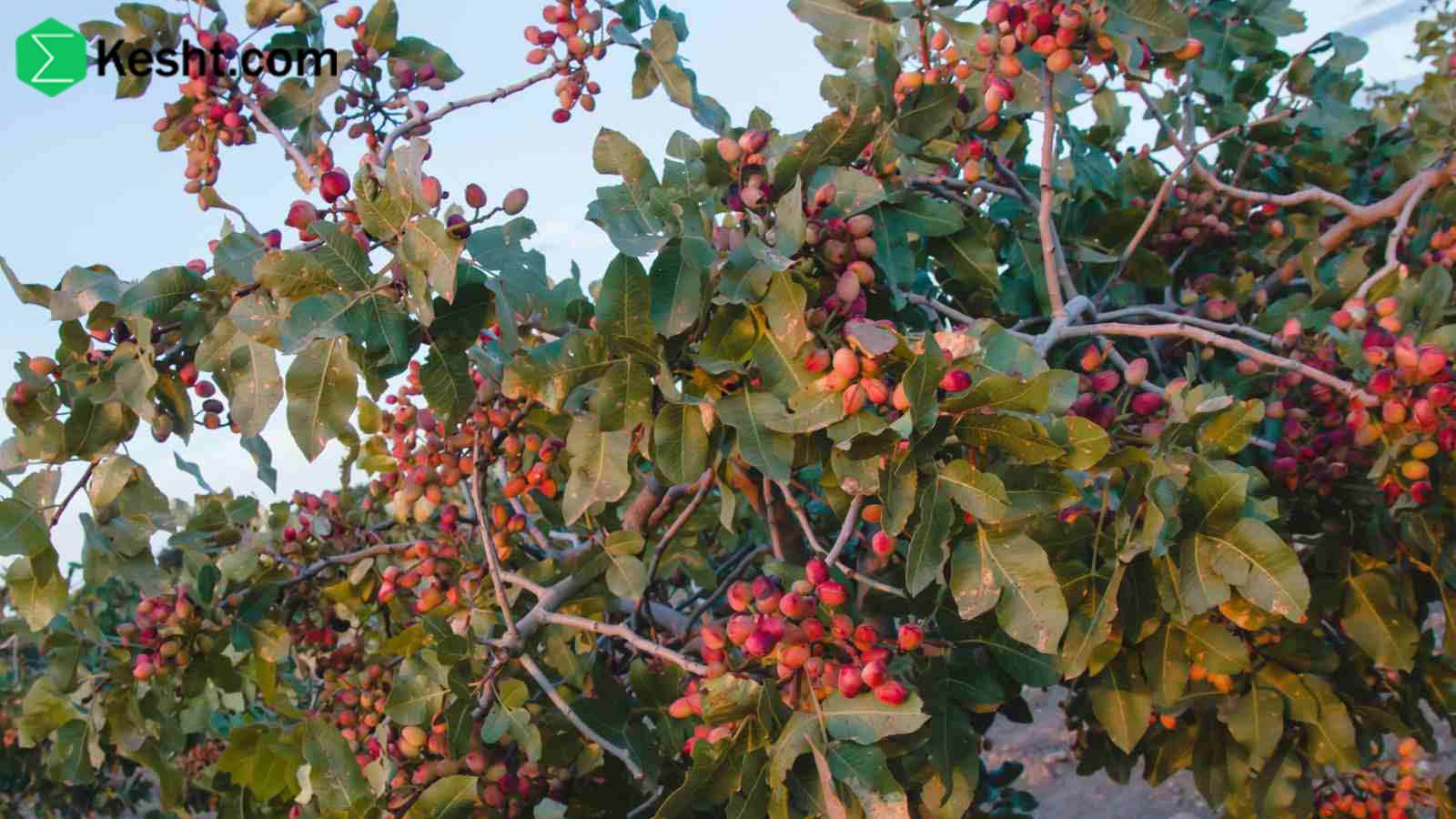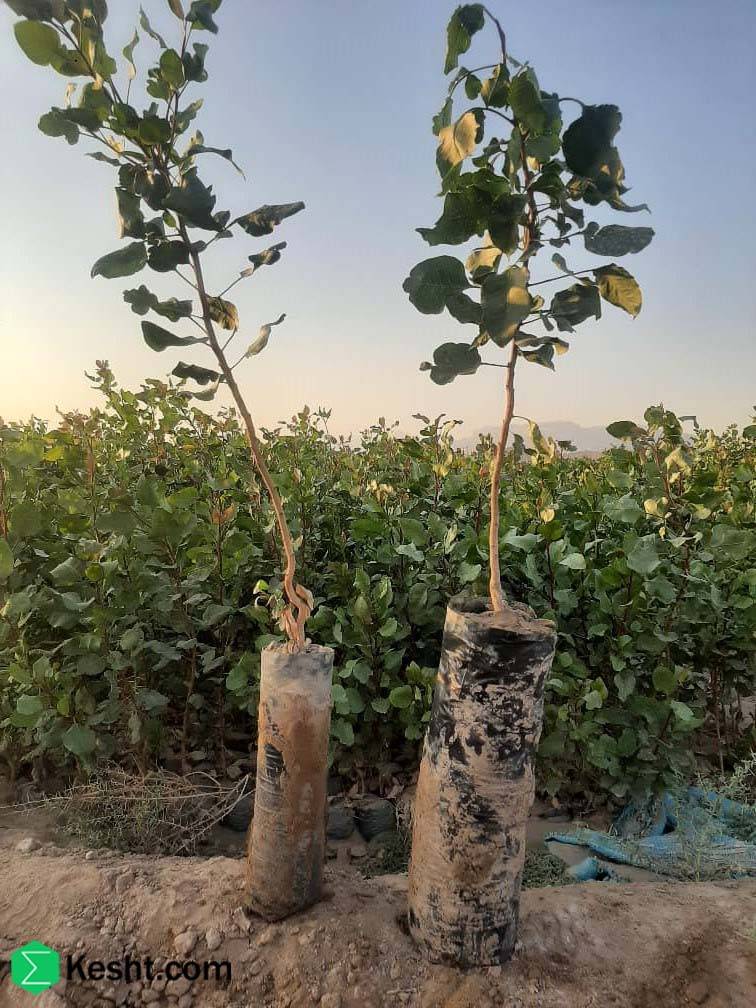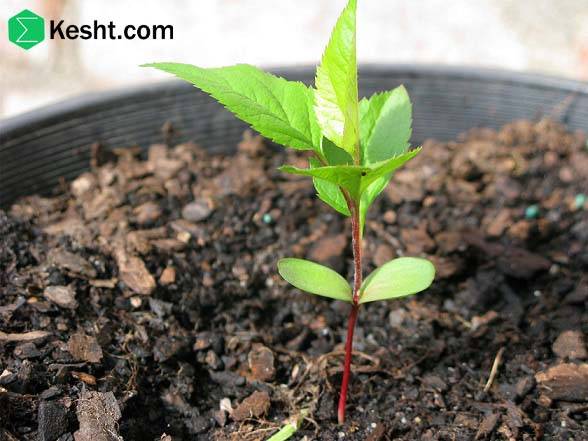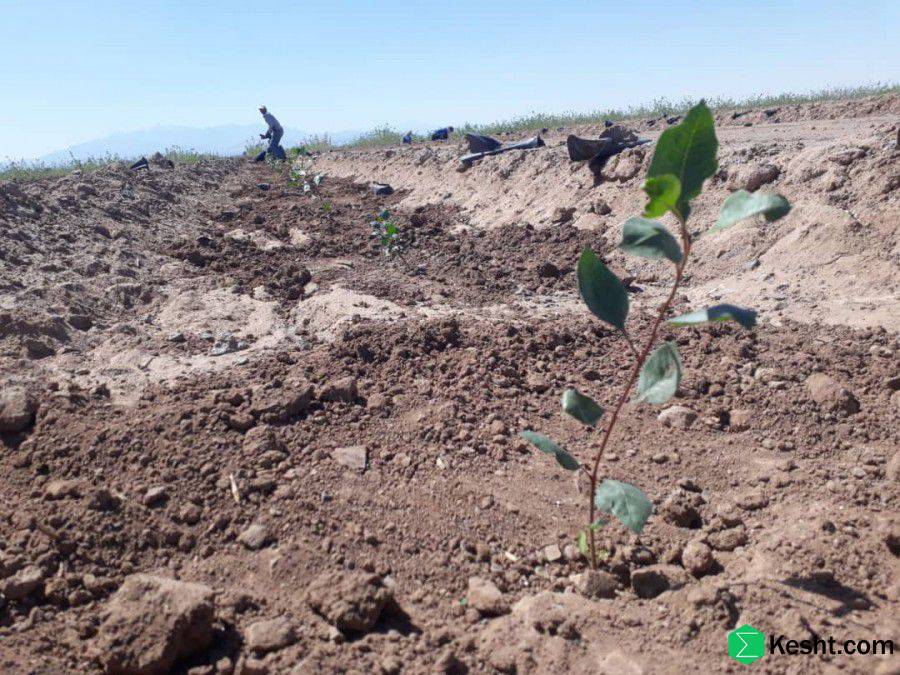Economic benefits of planting hybrid pistachio seedlings
- Earlier cash flow: Hybrid-rootstock trees (e.g., UCB‑1) typically reach economic yield about one season earlier and produce more in the juvenile years.
- Lower losses and replacement costs: Better tolerance to soilborne diseases (especially Verticillium) means fewer dead trees and fewer “empty spots” in the block.
- Uniform growth, cheaper management: More uniform trees = simpler operations (pruning, irrigation, fertigation) and fewer management errors.
- More stable gradeable yield: Under stress (salinity/disease/heat), a higher share of saleable crop is preserved.
In pistachio, “hybrid” most often refers to the rootstock (e.g., UCB‑1). Market quality/pricing depends mainly on the scion (female cultivar), but a hybrid rootstock improves economics via growth, survival, and uniformity.
If you are interested, it is recommended that you read the following article / article title:
How to Choose the Best Almond Sapling? A Complete Guide to Buying Almond Saplings
Benefits, by economic lever
Revenue lift
- Earlier bearing by 1–2 seasons under good management → higher cumulative yield in years 4–7.
- Higher early-year yields: depending on soil/water/disease pressure, +5–15% is often reported.
- Quality preservation under stress: in some orchards, +2–5 percentage points higher split and fewer blanks in tough years—directly lifting Grade‑1 sales.
Cost savings
- Fewer deaths from Verticillium/replant stress → save on replacement trees + replant labor + lost years of production.
- Uniformity in operations → 5–10% fewer person‑hours for pruning/training/irrigation adjustments in many orchards.
- Fewer “empty islands” → better use efficiency of water, fertilizer, and land.
Risk reduction
- More stable production against disease/stress → higher likelihood of meeting sales contracts and cash‑flow plans.
- More synchronized phenology → more predictable harvest and processing windows.
Time value of money (NPV/IRR)
- Because revenue arrives earlier, project NPV increases. Even small annual yield differences matter when pulled forward by one year.
Simple numerical example (illustrative)
- Density: 300 trees/ha
- Compare UCB‑1 vs. seedling atlantica rootstock in a site with moderate disease pressure
- Difference in saleable dry yield (kg/ha):
| Year | Atlantica | UCB‑1 | Delta |
| 3 | 0 | 100 | +100 |
| 4 | 200 | 400 | +200 |
| 5 | 800 | 1,000 | +200 |
| 6 | 1,200 | 1,400 | +200 |
Sum of deltas (years 3–6) = 700 kg/ha. With 300 trees/ha, that’s ~2.3 kg extra per tree over this period. With discounting (e.g., 20%), the break‑even threshold is roughly 1.8–2.0 kg sold per tree. If the hybrid rootstock premium per tree is less than the value of ~2 kg of dry in‑shell per tree, it’s usually economical. (Actual figures vary by site and management.)
When might a hybrid rootstock not “pay”?
- Cold/frost‑prone climates: If the chosen hybrid rootstock is less cold‑tolerant than beneh/atlantica, frost risk can erase the advantage.
- Minimal soilborne disease and near‑ideal soil/water: Yield differences may be small; if the nursery premium is very high, the economics weaken.
- Identity risk: If the nursery is unreliable or UCB‑1 is not true‑to‑type, the economic edge disappears.
If you are interested, it is recommended that you read the following article / article title:
When to Spray Almond seedling: A Comprehensive Guide to Pest and Disease Management for seedling
How to check your own economics quickly (🧮)
Inputs: trees/ha, hybrid premium (currency per tree), sale price (per kg of dry pistachio), expected yield delta in years 3–6 (or 3–8), discount rate r.
Max Premium per Tree ≈ [ Σ_t (ΔYield_t × Price) / (1 + r)^t ] ÷ (trees/ha)
If actual premium ≤ Max Premium, the hybrid choice is economical. Add a 10–20% safety margin to account for risk.
Prerequisites to realize the economic edge
- Certified, grafted trees from a reputable nursery (rootstock named as hybrid, seed/clone source disclosed, scion cultivar identified).
- Match hybrid rootstock to climate: UCB‑1 suits most areas and disease‑affected soils; in very cold regions, beneh/atlantica may still be safer.
- Manage for stronger vigor: steady irrigation/fertigation, timely structural pruning, and strict avoidance of waterlogging.
We are the “ekesht” platform — a subsidiary of Samin Atlas Iranians and the only official exporter of BlueLabel seedlings in Iran
Why Blue Label?
Because the world only trusts these seedlings!
Ordinary seedlings (without labels or other labels), even if one of them is infected, can destroy your entire garden — without you realizing it!
But the advantage of Blue Label seedlings:
✅Each of them has a global barcode
✅Tested in advanced laboratories
✅Free from any viruses and microbes
✅The only seedlings that are allowed to be legally exported!
This is important for you if:
- You want to build a garden that is productive and hassle-free
- You are looking for a long-term investment in gardening
- You want to start without stress, without losses, without surprises!
Blue Label seedlings = peace of mind
Because when the seedlings are healthy, the garden stays healthy — and real profits come!
Contact us now — before a random seedling destroys your garden!
Healthy Seedlings = Fruitful Garden = Smart Investment
And that’s exactly what we do at ekesht.
ekesht platform (with fifteen years of practical and successful trade experience with Russia, Kazakhstan, Iraq, China, Turkmenistan, Turkey, etc.) is ready to cooperate with people active in the field of agriculture.
For more information and additional information, please contact us via social media, phone call or email
Phone number:
Email:
Social media address:


